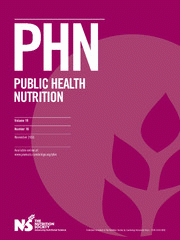Objective:To determine the contribution of forest foods to dietary intake and estimate their association with household food insecurity.Design:Cross-sectional survey conducted among 279 households. Using a 7 drecall questionnaire, information on household food consumption was collectedfrom women and used to determine the household dietary diversity score, foodvariety score and forest food consumption score (FFCS). Household FoodInsecurity Access Scale (HFIAS) score was determined and Spearman rank correlation was used to establish the relationship between consumption of forest foods and HFIAS score. Women’s dietary intake was estimated from two 24 hrecalls. The contribution of forest foods to women’s nutrient intakes was calculated and wome ’s nutrient intakes were compared with estimated average nutrient requirements.Setting:Rural forest-dependent households in twelve villages in eastern and southern Cameroon.Subjects:Household heads and their non-pregnant, non-lactating spouses.Results:Forty-seven unique forest foods were identified; of these, seventeen were consumed by 98 % of respondents over the course of one week and by 17 % of women during the two 24 h recall periods. Although forest foods contributed approximately half of women ’ s total daily energy intake, considerably greatercontributions were made to vitamin A (93 %), Na (100 %), Fe (85 %), Zn (88 %) and Ca (89 %) intakes. Despite a highly biodiverse pool of foods, most households (83 %) suffered from high food insecurity based on the HFIAS. A significant inversecorrelation was observed between the HFIAS score and the FFCS (r2=0·169,P=0·0006), demonstrating that forest foods play an important role in ensuring food security in these forest-dependent communities.Conclusions:Forest foods are widely consumed by forest-dependent commu-nities. Given their rich nutrient content, they have potential to contribute to foodand nutrition security.
DOI:
https://doi.org/10.1017/S1368980016001324
Altmetric score:
Dimensions Citation Count:























